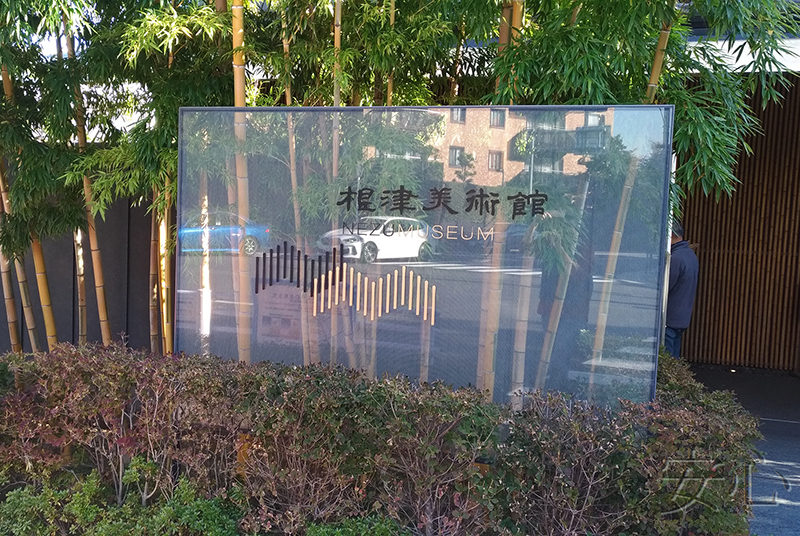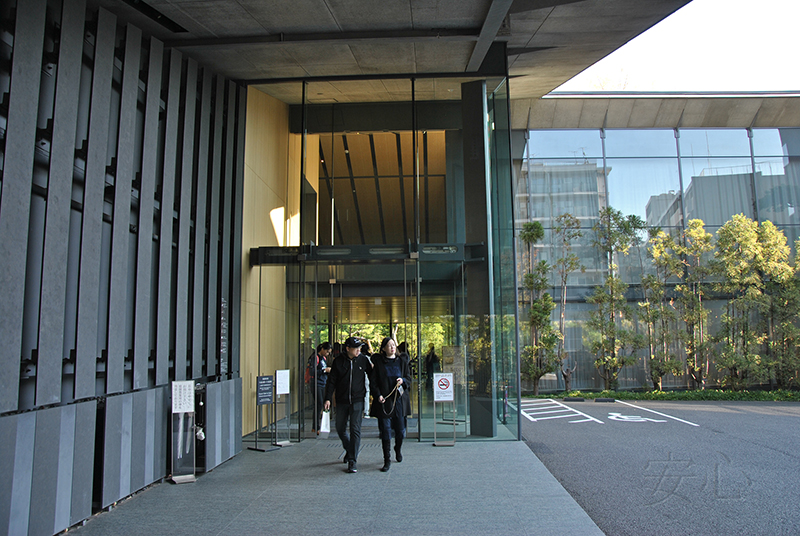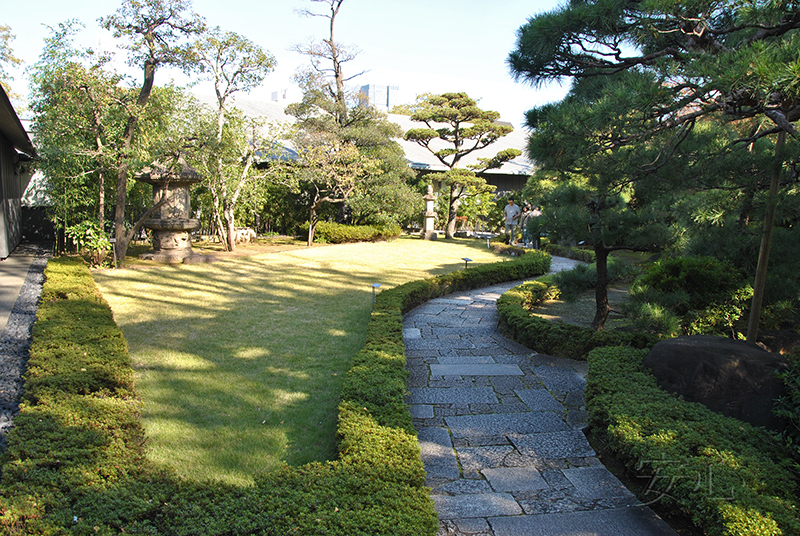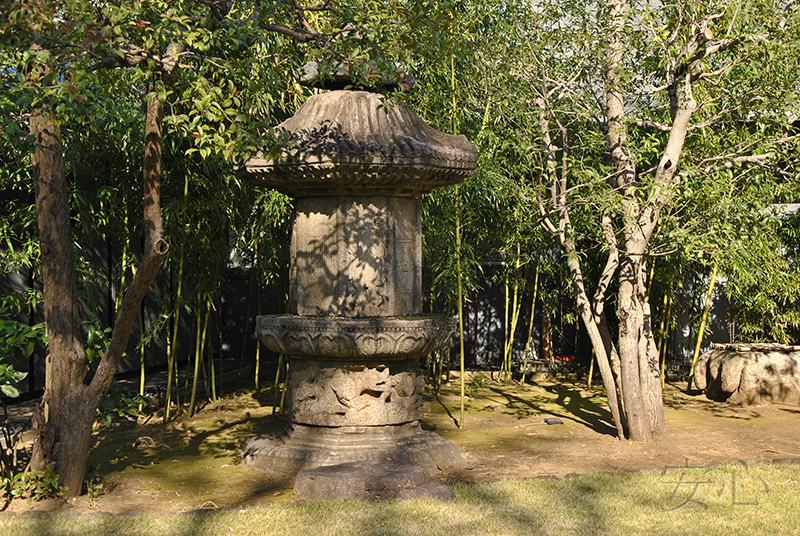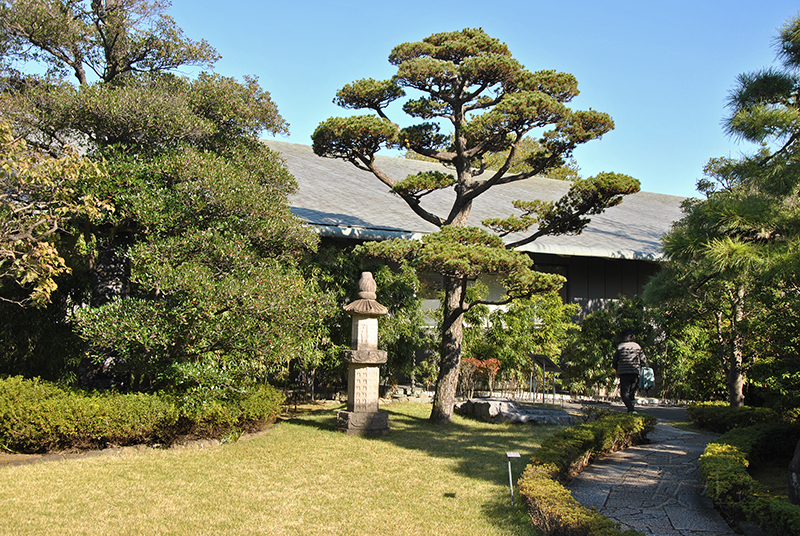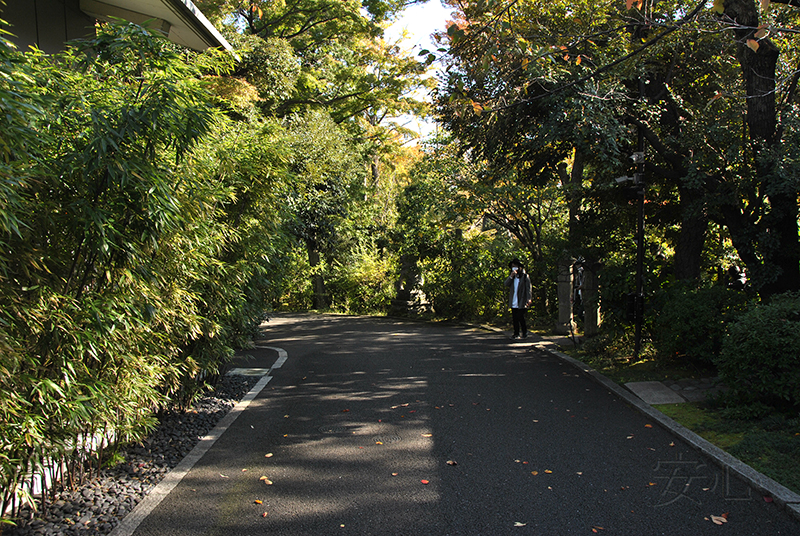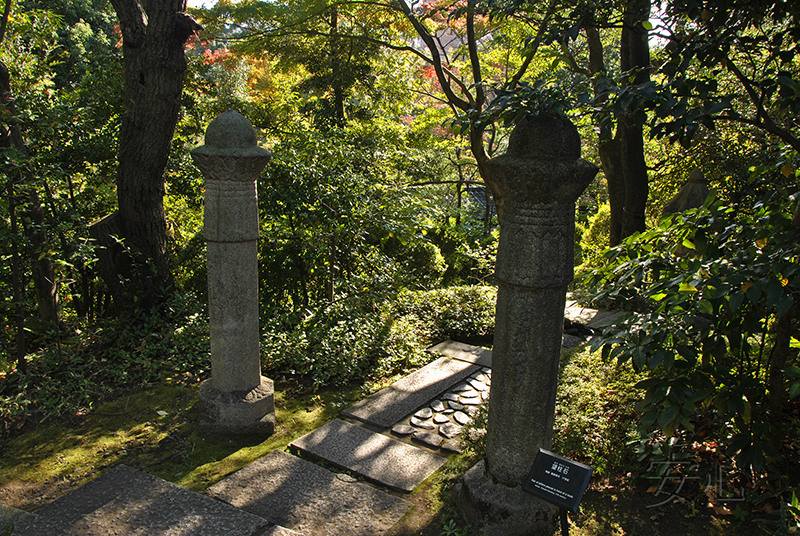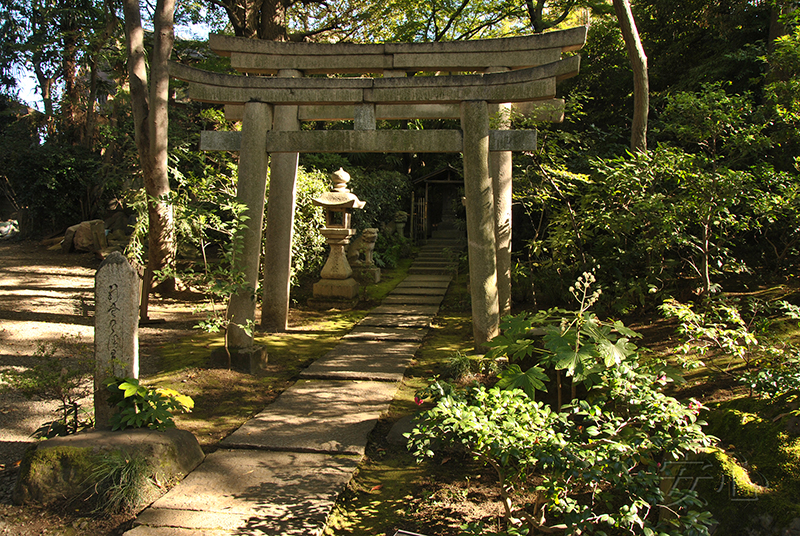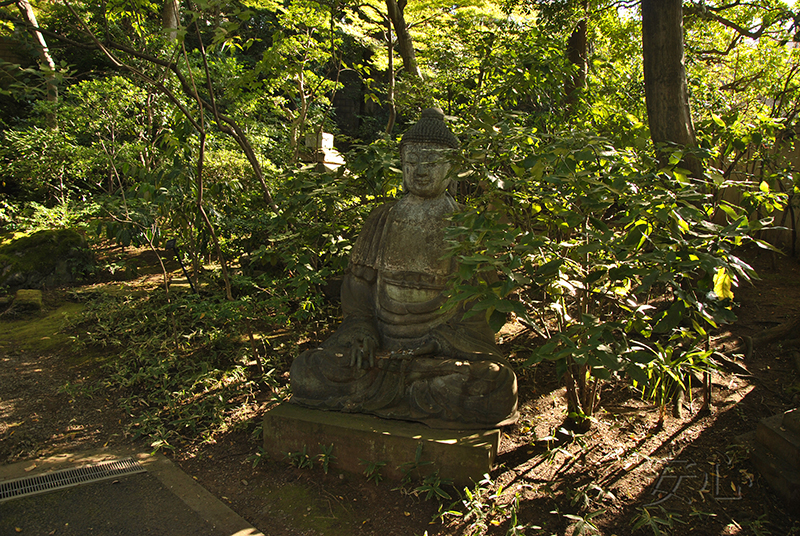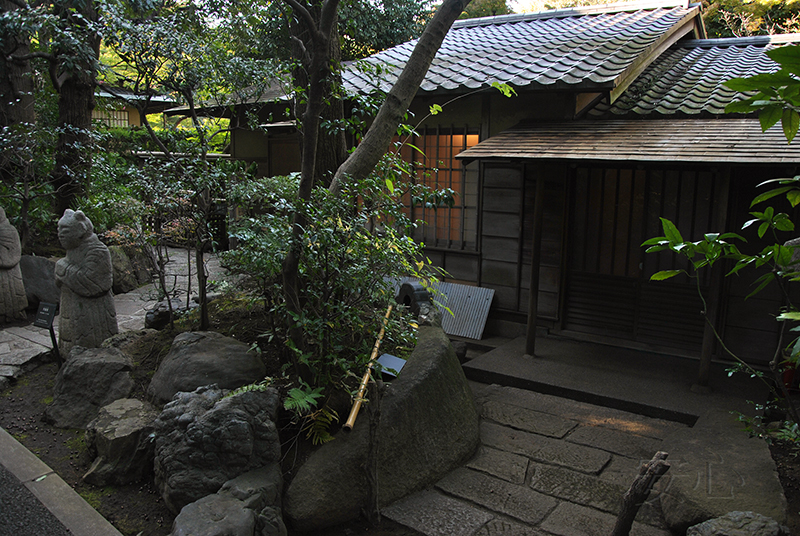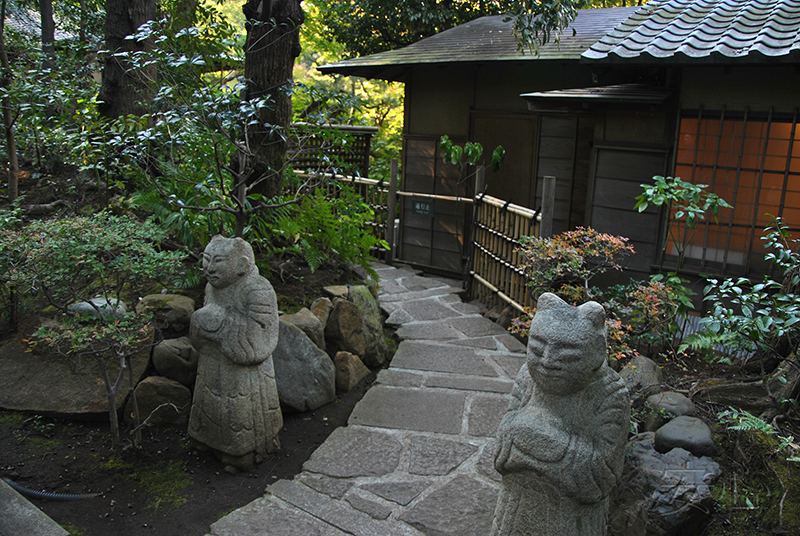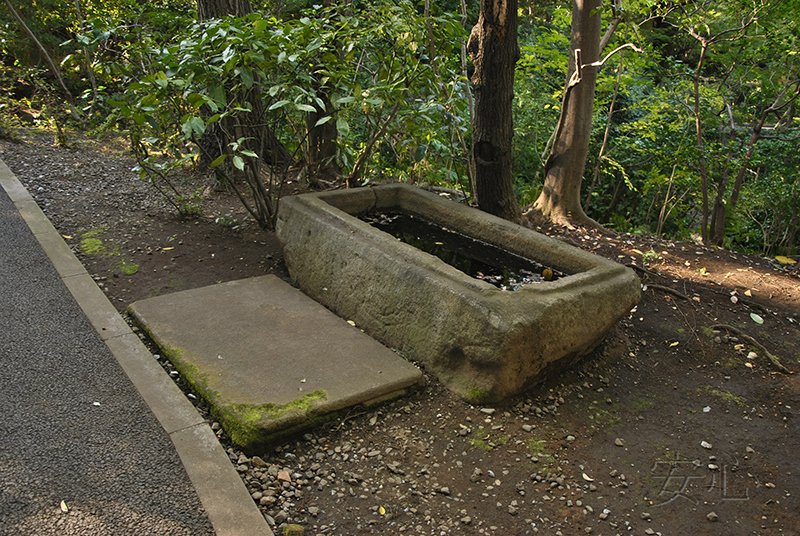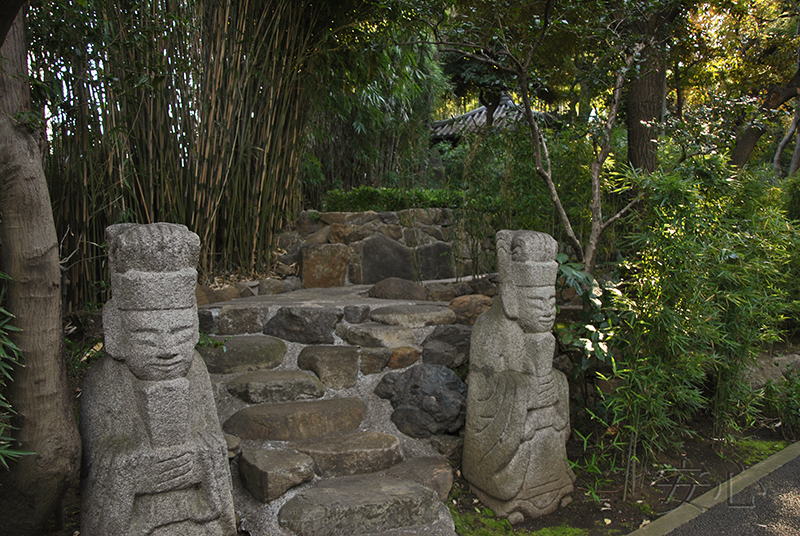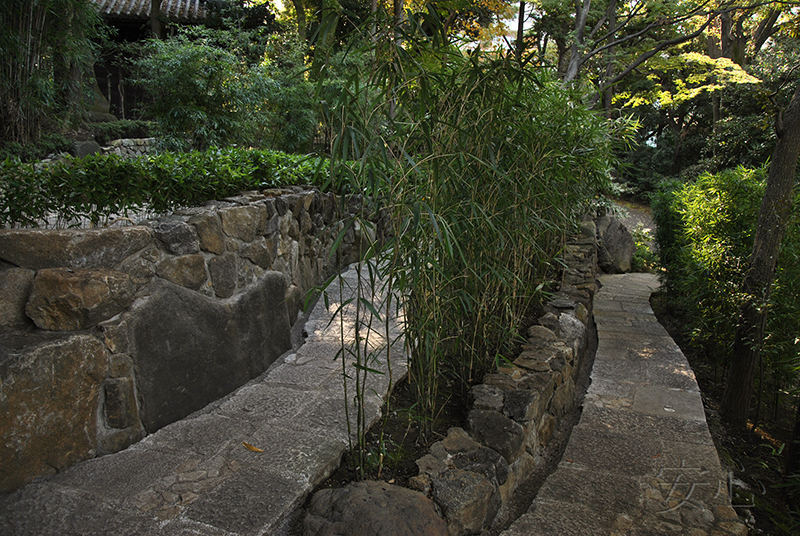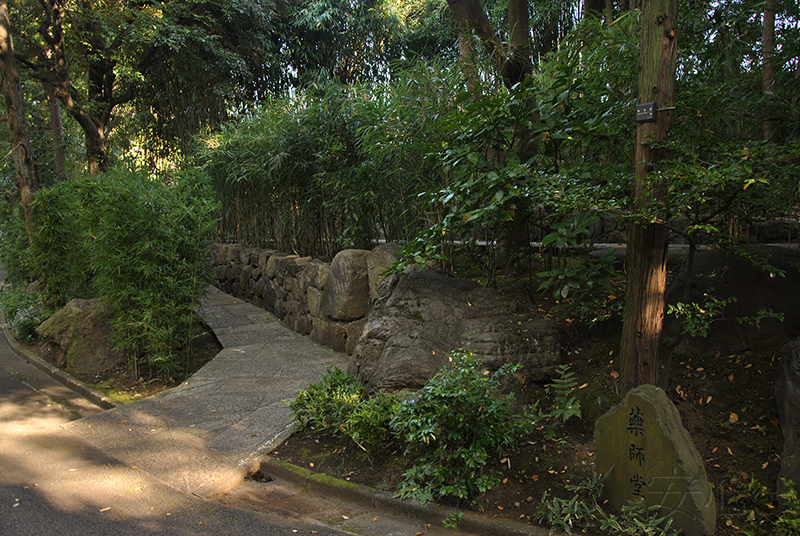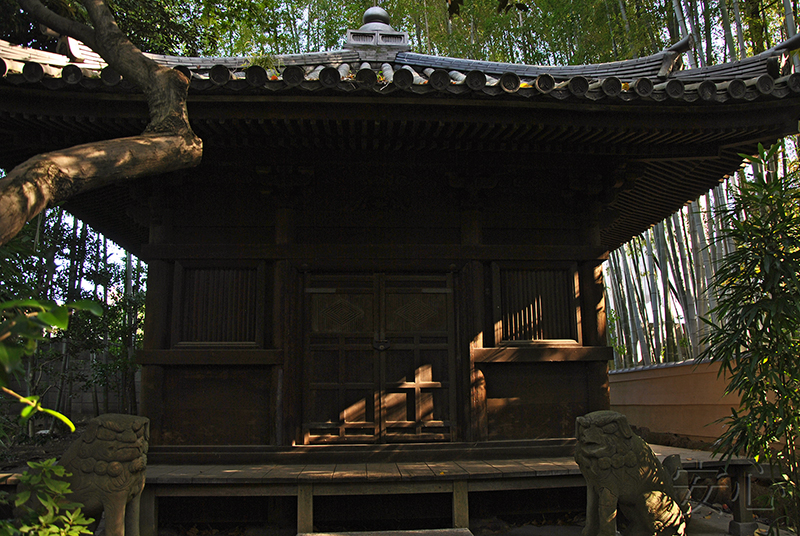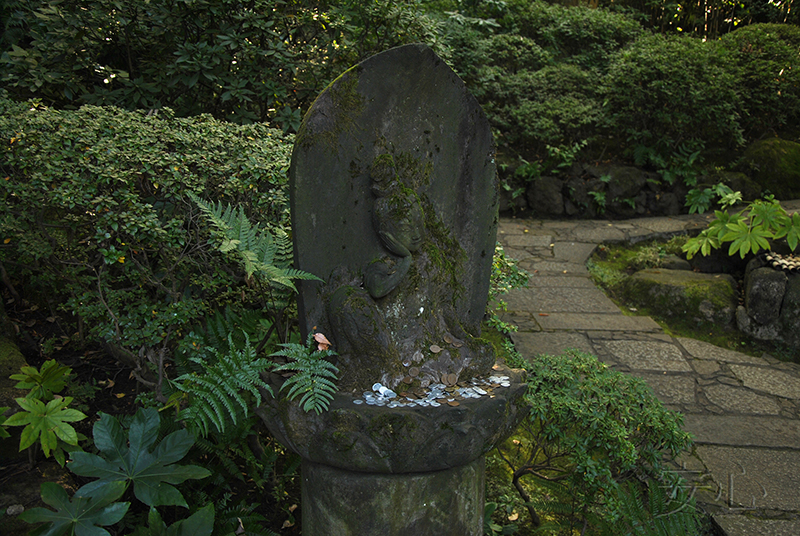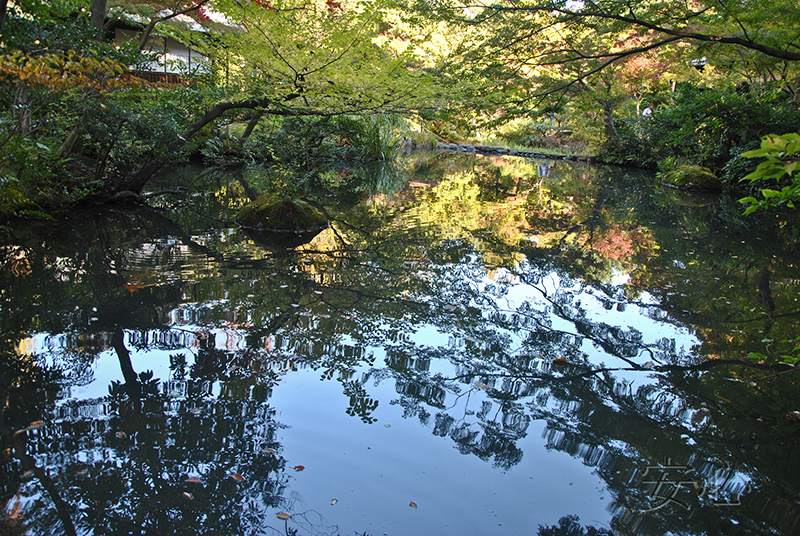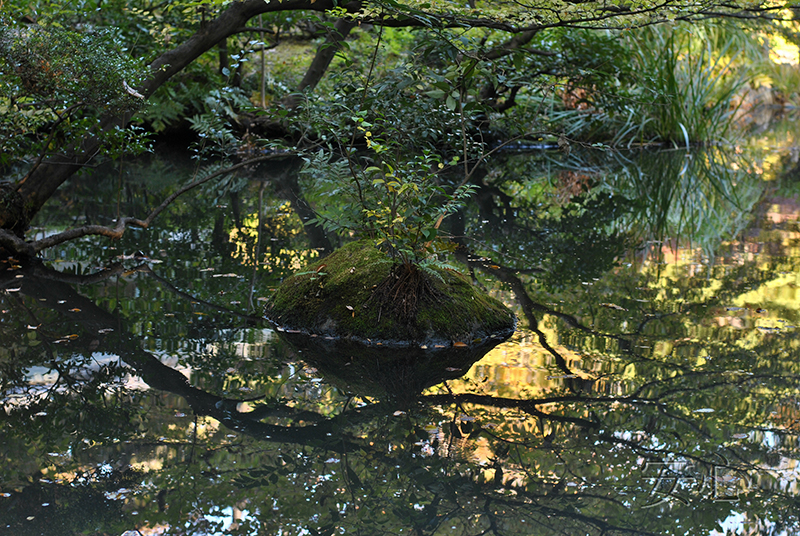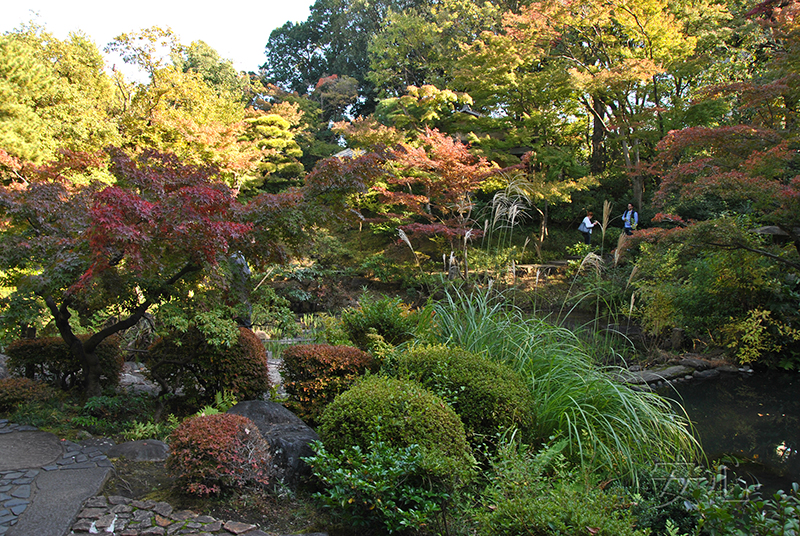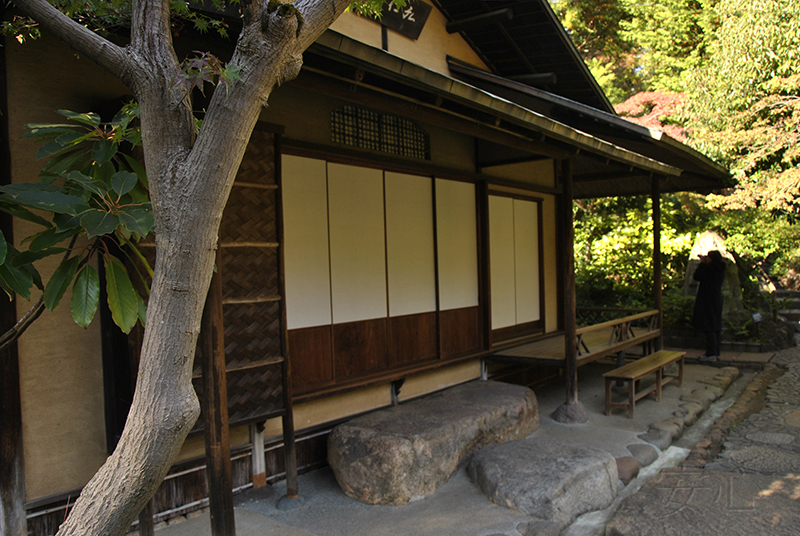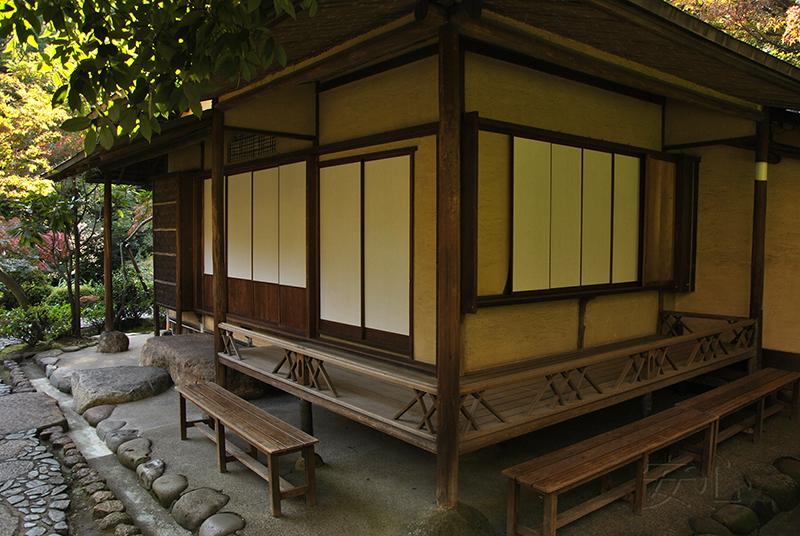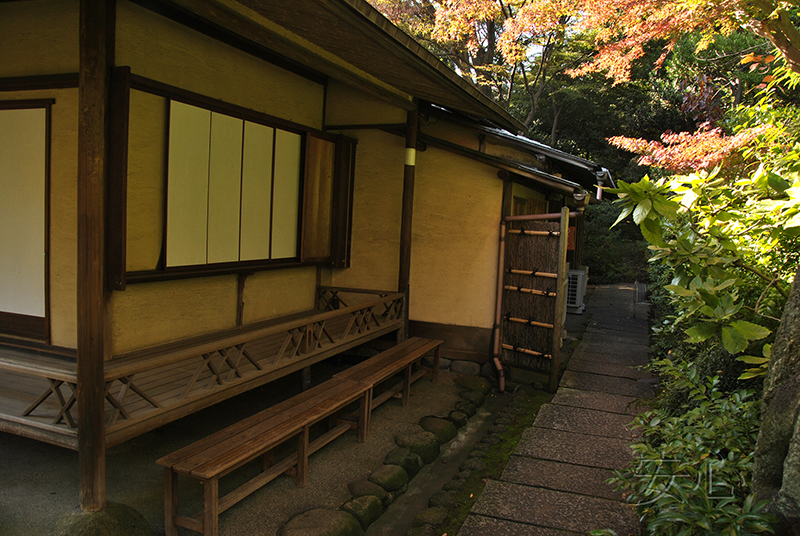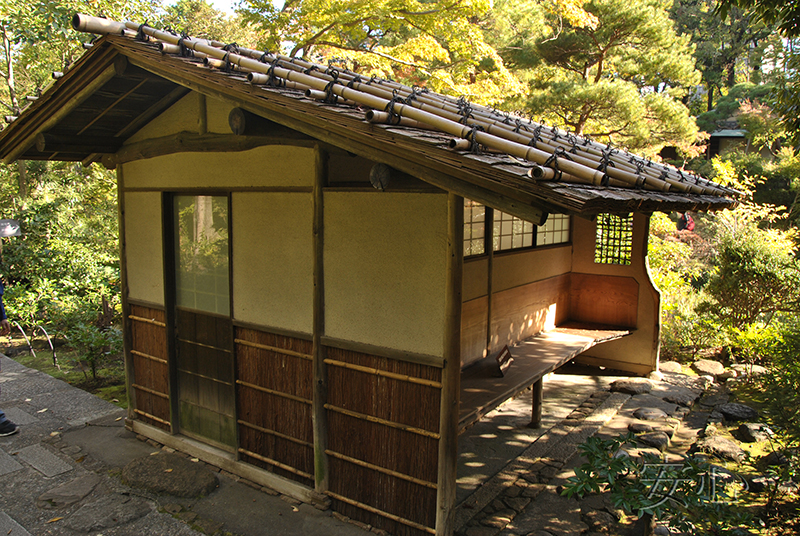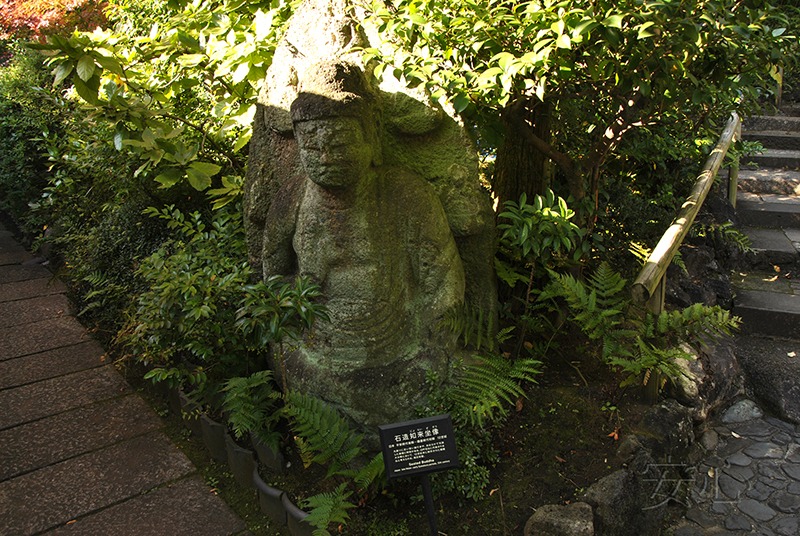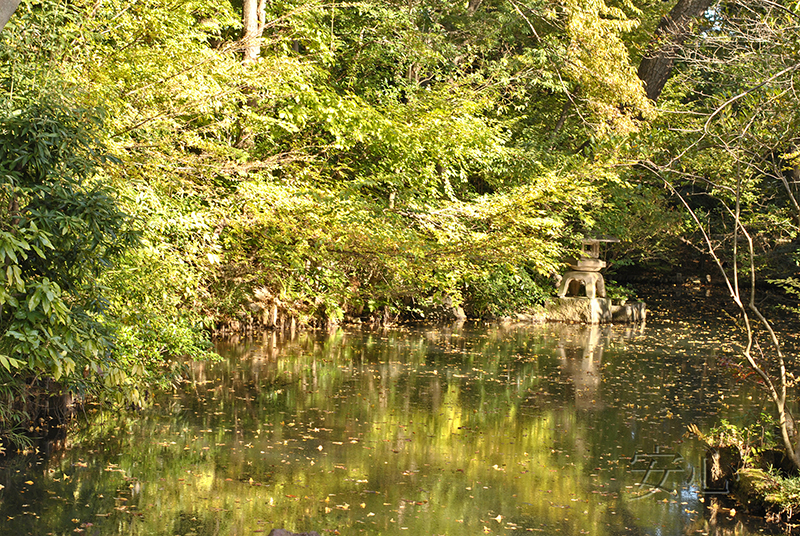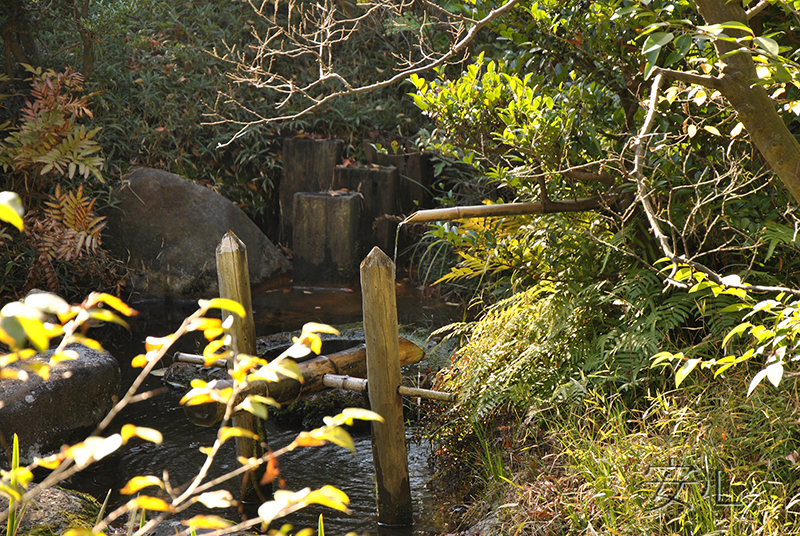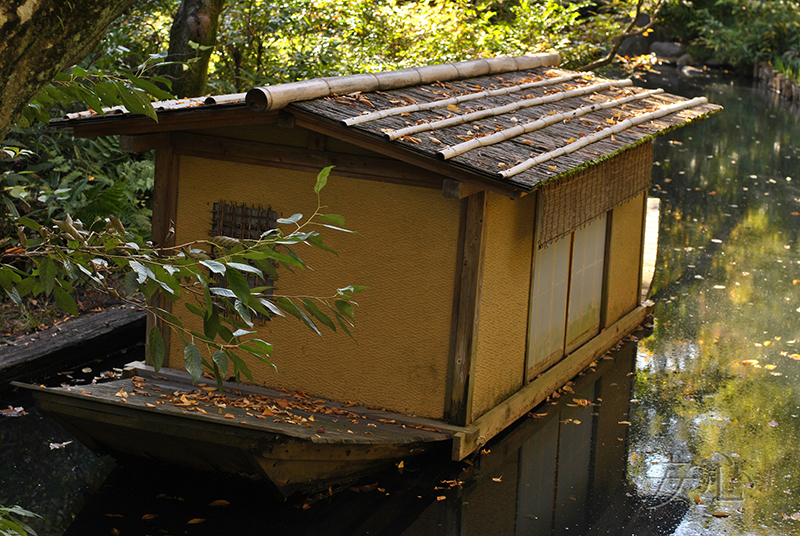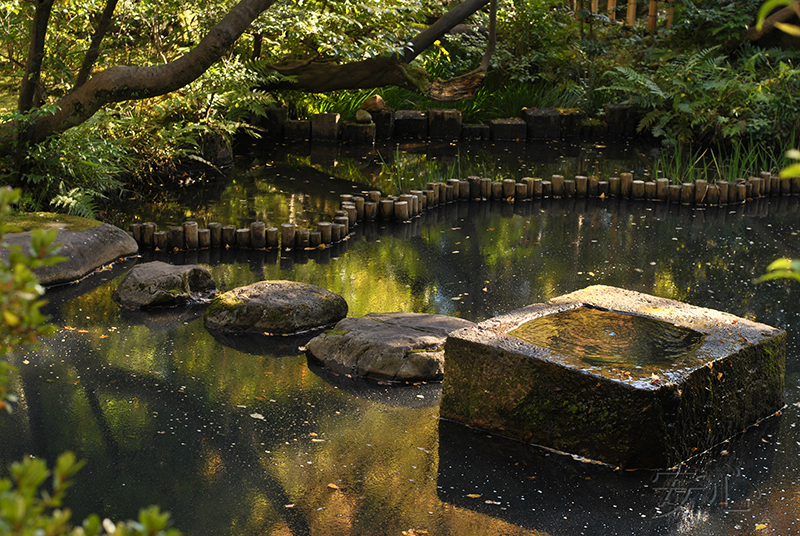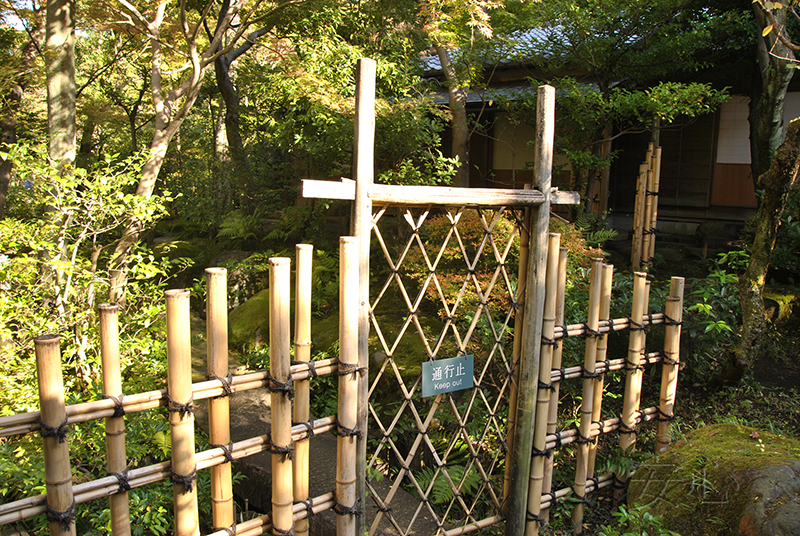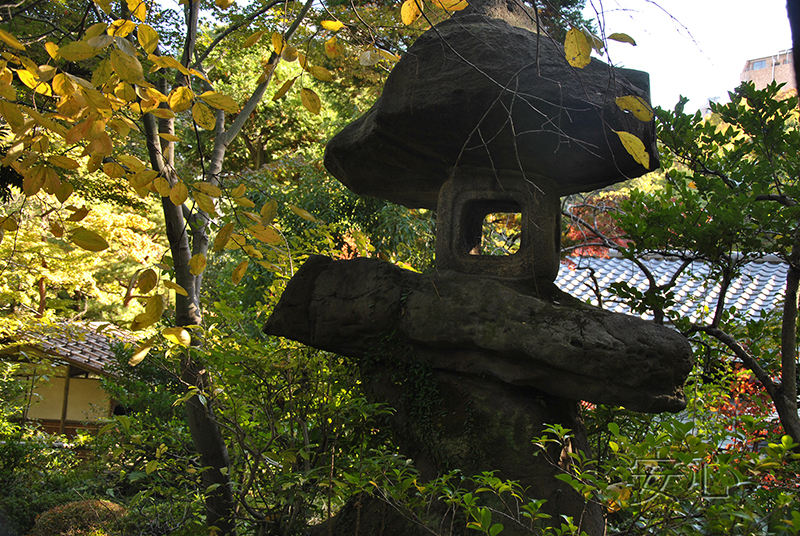
Nezu Museum Garden
The foundation of the Nezu Museum is the private collection of Nezu Kaichiro, the industrialist and president of the railway company. There are exhibits of Japanese and Asian art, such as painting, ceramics, swords, tea dishes and so on.
In 1940, after the sudden death of Kaichiro, the son of a collector founded a fund to save the collection, and one year later he opened a museum on the site of a family house. However, during the war, the garden and tea house were badly damaged, and exhibits had to be evacuated to a safe place. Exhibitions were resumed after 1946.
The museum went through a major reconstruction in 2006 - 2009. A new exhibition building was designed by the Japanese architect Kengo Kuma.
At the entrance there is a big moon-shaped stone boat filled with water. Lantern-shaped statue stands behind the boat. An inscription next to it says that such sculptures are installed in front of a tomb. Perhaps this is an expression of grief over the death of Nezu's father?
Further we saw a very picturesque corridor leads us to the museum building. On both sides - bamboo, but on one side it is alive.
The building of the museum.
In front of the museum is a beautiful garden with an area of 17,000 square meters. But it is located on a slope, so you can't see it whole and immediately. The stairs to the right leading down to the garden.
In the thickets, on the left side, is the figure of Amitabha, dating 1310. This is the most revered figure in the Pure Land Buddhist school, where the repetition of this name actually guarantees entry into paradise.
We went by the second way, diagonally crossing the lawn opposite the museum.
It’s just that our attention was attracted by the huge lanterns installed in the meadow.
Then the road led us down. Later, on the plan, we understood that this is the longest path, literally encircling the whole garden.
On the way we met a lot of interesting things. In most cases, explanatory tablets were nearby. For example, such pair of pillars were installed opposite the tombs in Korea, during the Choson Dynasty, and they date by 17th century.
And next to this Shinto shrine there was no explanation, but on the plan this place is designated as Kitano Tenjin Enshrined at Hibaishi. To the left of the torii gate is a huge stone lantern, to the right is a statue of Buddha.
The next thing we saw was the Seikeitei tea house. Unfortunately, the way inside was closed.
Such cute creatures are on duty at the entrance.
A little further there is another tea house - Ichijuan.
Nezu Kaitiro was a keen tea path practic. In the last years of his life, he adopted the name Seisan as the name of the tea master and put together a collection of tea utensils that could be used during ceremonies. That is why an important place in the garden is given to tea art. This part of the garden, located in the thick shade of the trees, is intended, apparently, for a classical ceremony chanoyu. As we found later, a significant place was used for tea ceremonies of a different type. But now we still walked along the cool road further.
Soon we met a bamboo grove that reproduced the grove at the Yakushido Shrine. Perhaps this refers to the Yakushi-do Temple, located on the territory of the Kokubunji Temple in Tokyo.
A winding road drowning in bamboo thickets leads to the temple. At the entrance there are again unknown creatures.
Retaining walls lined with stone.
Stair on the right leads to the temple. It is guarded by rather ferocious lions.
Opposite the stairs, we found the water device suikinkutsu. Actually we heard it. The essence of the device is that under the ground there is an inverted jug with a small hole at the top. The jug itself is in another container that maintains a small water level below. Water goes through the hole and drops into the water. The sound of a falling drop is reflected by the walls of the jug. Suikinkutsu is not so often found in the gardens, although the sound is very pleasant and melodic.
There are quite a lot of different sculptures, people put coins next to some of them.
After the grove, we finally entered a well-lit area. Here we saw a stream, which divide the lower part from the middle. We crossed the bridge to the other side.
From here it was good to watch almost red maples on the hillsides.
The stone path led us to another tea house - Bujian. Rather, it was a whole complex of buildings. This time it was located at a high point, from where a view of the stream and the hills opened. The trees, shadowing the buildings, however, did not prevent the people there to admir the garden.
And there were a lot of interesting things to admire. These are numerous sculptures. Such as, for example, this seated Buddha, who belongs - neither more nor less - to the 12th century!
Or a wide stream with its "secrets": suddenly a shishi-odoshi will sound, or a boat will appear, or stepping stones will lead to a bowl of water.
By the way, if you will be lucky enough to visit this garden at the end of April or in May, you will see the whole stream literally strewning with blooming irises. True, the garden is beautiful at any time of the year. And it’s especially interesting to look at the details.
Despite the fact that the area of the garden is less than two hectares, it seems that it is huge. This effect is achieved due to the perfect layout. Hills, different levels, winding paths connecting with each other in several places, a dense shadow from trees and open spaces - all this not only visually increases the size, but also gives depth, saturation to the space. Here you can even get confused and miss something. For example, we did not notice the fourth tea house. And I discovered this much later when I was looking at the map on the computer. Therefore, it is better if before going to the garden you study the map well, because the emotions are so captivating in the garden that you are ready to forget everything.
Garden Information:
Address: 6-5-1 Minami Aoyama, Minato-ku, Tokyo, JAPAN
Opening hours: from 10.00 a.m. to 17.00 p.m.
Closed: Mondays, during exhibition installations, and during the New Year holiday period.
anshin©2011All rights reserved. When using the materials of the site, reference is obligatory.
Proposals for co-operation, as well as comments and suggestions on the site please send to the address: anshinsad@gmail.comtel: +7 (965) 121-80-60, 10am-20pm
